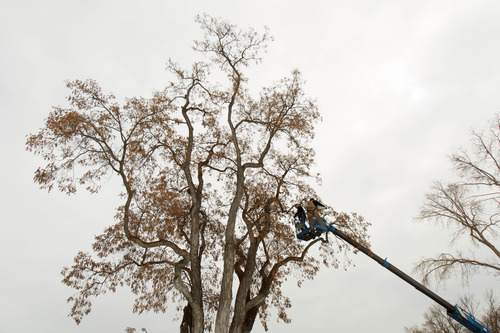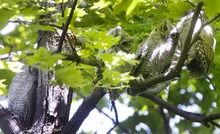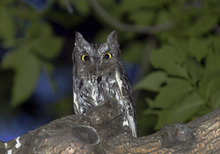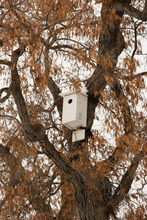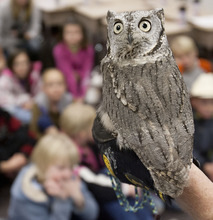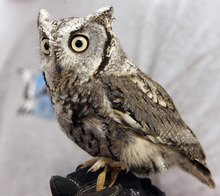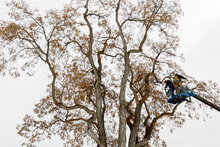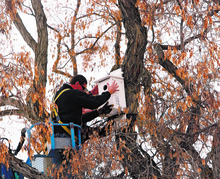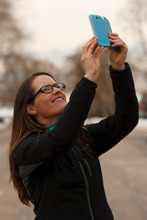This is an archived article that was published on sltrib.com in 2013, and information in the article may be outdated. It is provided only for personal research purposes and may not be reprinted.
The famed peregrine falcons of downtown Salt Lake City may soon have competition for webcam fans from a fellow raptor with nocturnal habits.
University of Utah biology students spent Thursday afternoon installing owl nest boxes at three locations on the campus.
The hope is that Western screech owls will return from, or stop on, their migration north and set up residency in time for the breeding season that starts soon.
Student Brandi Thompson came up with the idea while in the Global Environmental Issues class.
"One of the things we talked about was serving the learning community. There was a lot of preplanned things for us, but I decided I wanted to [do] my own project," Thompson said.
Spurred into action by a guest lecturer who talked about urban wildlife and mentioned owls, Thompson decided she wanted to build owl nest boxes and put them on campus. Amy Sibul, the service learning instructor for the class, also got involved.
Thompson applied for money to complete the project through the university's Sustainable Campus Initiative Fund (SCIF). Students at the University of Utah pay $2.50 per semester to the fund, and any student can apply for money through SCIF for projects on the campus that have a "positive environmental impact and help to educate the campus about sustainability."
Past SCIF projects have included water-bottle filling stations at the Marriott Library, Bike to the U Day and safe disposal of mercury thermometers.
Once the owl nesting project was funded, Thompson and Sibul sought permission from the campus grounds crew and risk management to install the boxes.
Everything came together and Thursday, with the assistance of U. of U. arborist John Estheimer and his bucket truck, the boxes were attached to trees at Fort Douglas, near the Warnock Engineering Building and near the A. Ray Olpin Union building.
The boxes will be monitored and once there are signs that a pair of Western screech owls have picked one as a nest site the team will return to place a webcam.
The webcams are solar-powered and can connect to the Internet through the school's Wi-Fi signal. Once connected, people from anywhere in the world will be able to watch the nesting owls with a link on the U.'s biology Web page.
"There are, of course, no guarantees that they will be used," Sibul said. "But we are hoping at least one of them might be used this spring."










